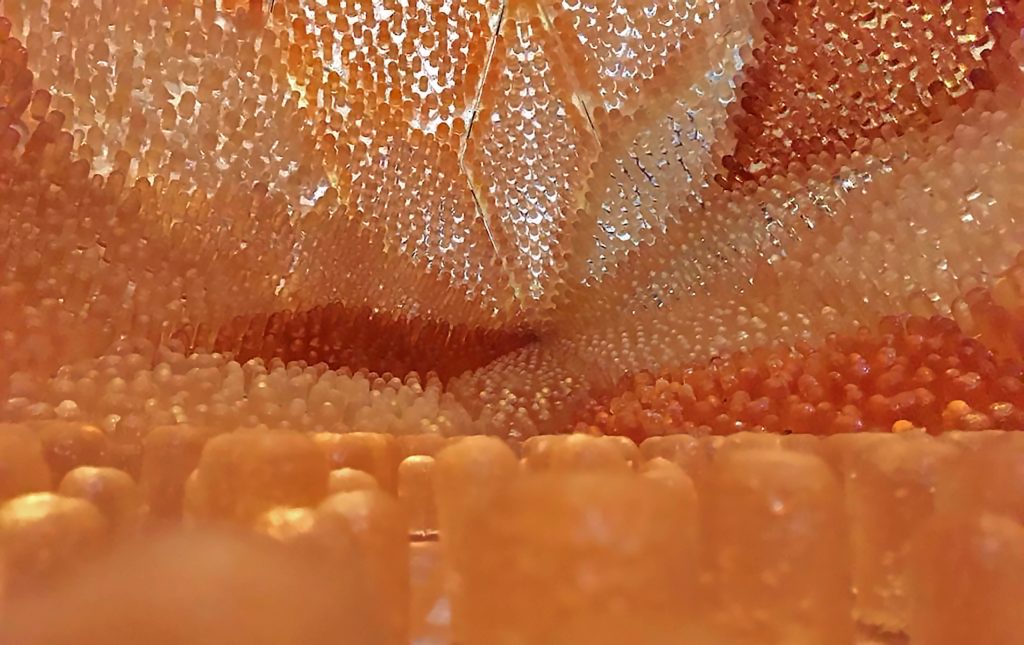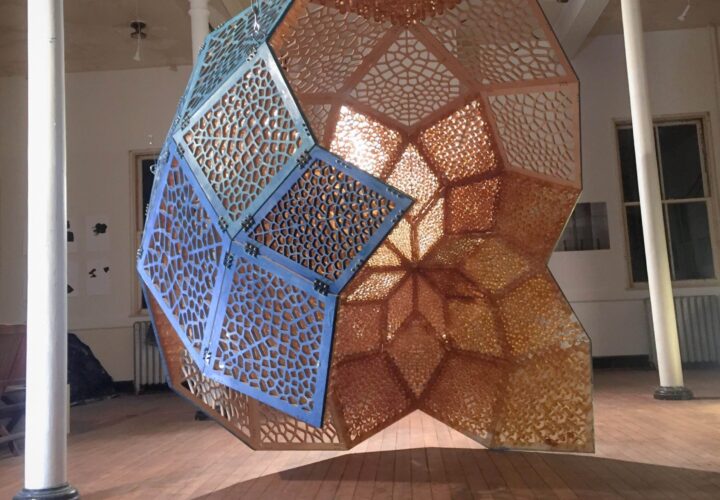
Mrinalini Aggarwal was trained as an architect in India before going to San Francisco to pursue an MFA. She is now the AICAD Fellow in the Fine Arts Department at the Pratt Institute in New York. Here, she discusses her philosophy of space and her installation As Though it Rained from Stars, which will be on view at Chashama Gallery in New York in May.
“I have an undergraduate degree in exhibition design. That was the beginning of my love for space. Spaces have the potential energy to create nurturing familial systems. When I was working as an architect, I was constantly asking how we can create meaningful experiences through architecture. At some point, my work became more and more abstract. I was interested in the emotive qualities of space rather than its geometric aspects. It felt natural to move into the fine arts, and I began designing sculptural installations. Eventually, I dropped all of my architecture clients and devoted myself to art. It felt like coming home.
How do you create a sense of curiosity or wonderment, even sadness or grief? How do those emotions translate into installations where people can have personal experiences within a group environment? I want to bring the private and the public together. I want to humanize public space through art.
As Though it Rained from Stars was one of the hardest projects I’ve done so far. I was interested in what desire would look like in a physical space. Is that even possible? Are there any commonalities between how we all experience that feeling? In 2012, I visited a 15th-century Islamic bathhouse in Mandu, India. The city has more than 15,000 ruined forts, and entire forests had grown inside of the structures. There was a tiny bathhouse within the palace, and it had the typical Islamic dome in the center featuring concentric stars. I talked with some of the locals about the architecture of the space and learned that when the bathhouse was in use, hot water would flow up through the walls and rain down from the star patterns on the ceiling. So the bathhouse became an architectural symbol of desire, as well as the poetic voice of trying to make it rain from inside of a star. For the installation, I drew design inspiration from natural and organic forms. The individual pieces were inspired by cilia in the lungs—the desire to reach out into the world and engage with the ‘other.’ In a sense, the installation is reaching out to engage with the human viewer. It was very important to me that the viewer could touch the rubber and that the rubber would feel like skin. At first, people were afraid to touch the art, but once they got into it, they really got into it. For all of my work, there needs to be another sense that is engaged other than sight.”


